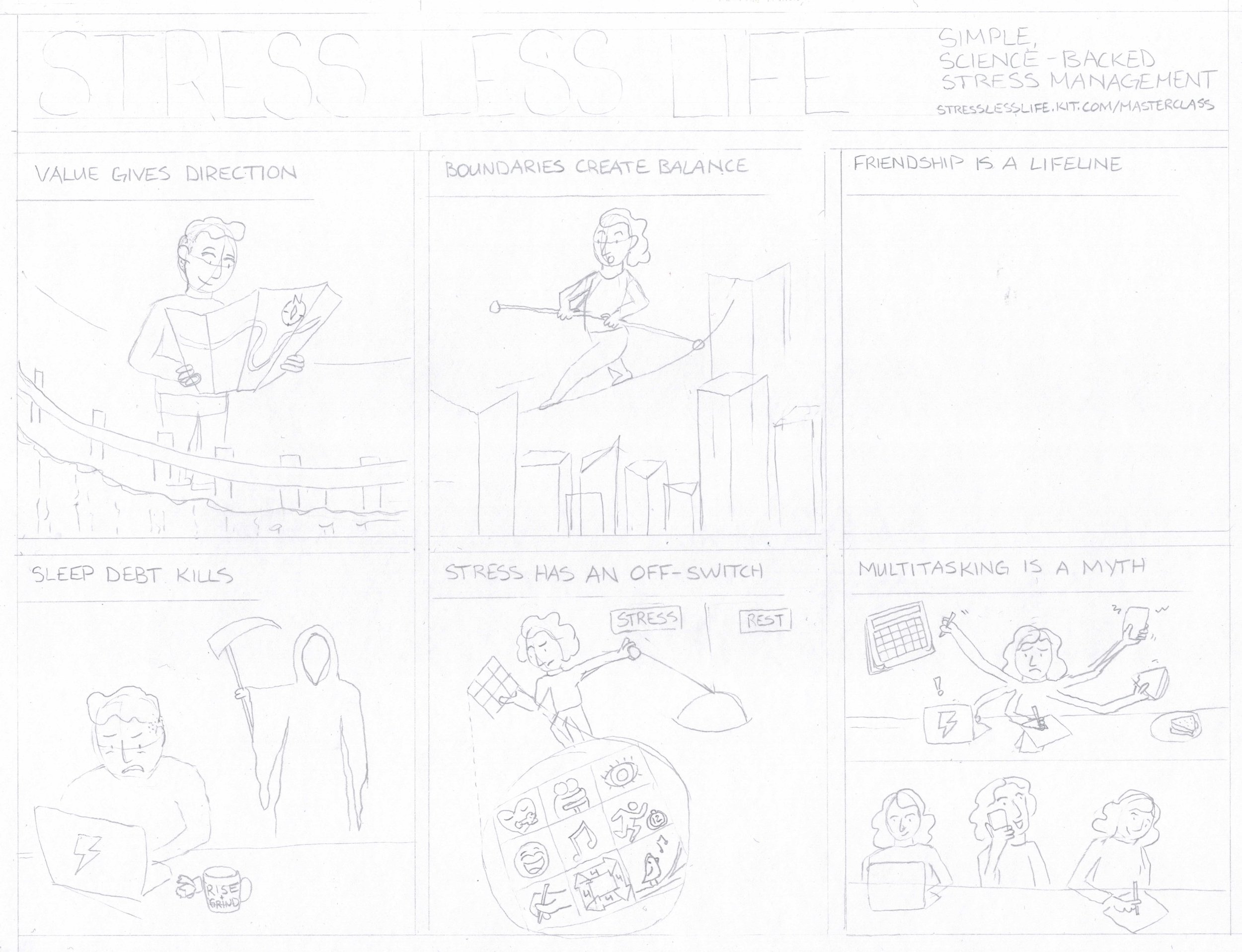How I make comics about ideas
Ideas are great. Especially big, creative ones coming out of the world of research.
But when ideas meet images: that's where it gets really good!
I've been working on my own idea comics and zines for a while (eg: "Vocational Awe" and "How do you manage your shit?" - more of those are coming soon). Moving from the first bit of an idea to thinking through how to share it visually is so satisfying.
And more satisfying: collaboratively thinking with others to co-create an idea on a page.
Making the “make-it-stick” image
Earlier this spring, Emily Parcell reached out to me. She is launching a course and was looking for some help with visualizing the core ideas. Her project brief, in brief:
“I am looking for “oh duh, now I get it” images for my main point in each module. The “if you take nothing else from this, I want this to stick” image.”
We met and she walked me through the course content. I suggested we think about each key idea as a scene that could connect together in a comic, but would also make sense as individual images.
A few drafts and a few weeks later, we had a final comic. Just in time for her to launch her course!
Voila:
How it's made: Idea comic edition
Spoiler alert: there are no secrets or special hacks I use when I make stuff. It's all a lot of time and thinking and drawing and re-drawing, and getting there eventually.
My infographic, comics, and other illustration work all starts the same way. I get on zoom with a client or collaborator and we start talking through ideas.
In the first meeting, I'm always trying to figure out:
What are the core concepts?
How do they connect?
What story can we tell?
Who is the illustration for?
How will the illustration be used?
What's the vibe?
Emily is super organized and I signed off of our first call with a clear sense of what she wanted and what I could offer.
First drafts
My very first draft is often not particularly visual. Just a lot of ideas in the oh-so-creative word doc:
Once I have a concept for each scene, I get to the fun bit: initial sketches!
I try to do these sketches as quickly as possible. I don't think about proportion or scale. I'm just trying to get a sense of how I might visualize key details.
After a few rounds of experimental sketches, I make the first rough draft to share with the client. Sometimes these are thumbnails, other times it's a general layout with placeholder sketches.
For Emily's comic, I ended up producing something that was quite refined.
Emily and I co-created a pretty detailed plan for the comic in our initial meetings, so the rough draft I sent her was pretty detailed.
While I knew I would make the final version with analog tools, putting together the rough draft on my iPad also helped with not getting too invested in the early stage of the illustration.
Pencils and ink
After an a second call to discuss the draft, I sharpened my pencil (2H for very light lines) and started working towards the final draft.
I also shared this as a last call for any tweaks to the text or images.
You'll probably have to squint to get anything out of that! The point is: I make a very light, more detailed sketch that includes all of the text.
Then, I get a very fresh pen out and ink over the pencil lines.
To help reduce the amount of erasing later (which can lift some of the ink), I use a kneaded eraser as I go to lift a some of the graphite.
The very last step: adding colour!
To keep the ideas front and centre, I used a simple colour palette: a few shades of grey, the white of the page, and a light blue that approximates Emily's brand colours.
Once the markers dried, I scanned the illustration, made some final digital touch-ups, and sent it off to Emily.
Ideas on the move
Comics bring ideas to life. They draw readers into your story in a meaningful way. For Emily, I took the biggest ideas from her course and turned them into a concise, inviting narrative.
Each of the individual panels will appear in Emily's course slides. If you are lucky enough to be in her Stress Less Life workshop, you will see them in action!
She will also be able to use them when she talks about the course: in boardrooms, with colleagues, online. Wherever the comic goes, Emily's most important "make-it-stick" ideas will be front and centre.
P.S. If you are building a course or have a research story to tell or a business to (re)launch, let's chat. A comic or infographic might be the piece you need to make your ideas move.






